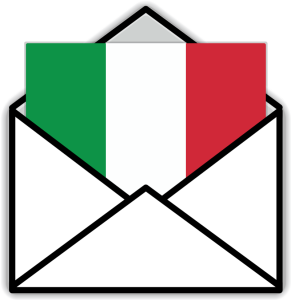Learning a foreign language has never been easier than it is today.
We are not at a loss for Italian language content or inputs to spend our evenings on.
But how much of this input will you retain in the long term? How many new Italian words and expressions will you internalize, store in your long-term memory, and recall every time you wish to learn them? How can we make the most out of the time we spend learning vocabulary?
A strategic Italian vocabulary learning habit is the key to a strong and long-lasting impact on your Italian language journey. Let me show you how.
In this list, I draw upon my expertise as an Italian language teacher and polyglot to present eight ingenious and effective strategies for mastering Italian vocabulary.
Let’s dive into these transformative techniques!
1. I don’t Learn Separate Words
I learn in chunks. A chunk is a habitual combination of a particular word with another word or words with a frequency greater than chance. Learning which words naturally go together when building your vocabulary will help you use them naturally, rather than merely translating word for work from your native language.
Example:
If you add just the word “concordare” to your vocabulary list, there’s a significant chance it will become part of your passive vocabulary. The key is to learn this word alongside words with which it frequently appears, such as:
- Concordare un appuntamento, meaning “fixing an appointment”
- Concordare una strategia, meaning “setting up a strategy”
- Concordare un prezzo, meaning “deciding on a price”
To find collocations in Italian, you can use:
- The Google Search Engine automatically displays the most searched word combinations by users.
- For beginner and intermediate learners, you can find your own chunks by using reading content geared to your level. I always recommend using graded readers, like these short stories in easy Italian.
- For advanced Italian learners, I find the “Dizionario delle collocazioni italiane” incredibly useful, ideal for those looking to expand and enrich their vocabulary.
- Instagram: Many teachers of Italian as a foreign language share daily words and expressions on their pages. It can be a useful source for phrases to add to your notebook. Follow my page on instagram here @smart_italianlearning.
I recommend creating your own set of chunks using any content you’re engaging with. The key is to use the same ‘chunks/phrases’ that you would in your native language.
2. Less is More is My Motto
Prevent “word overdose.” Unless you have a photographic memory, you should avoid making endless Italian vocabulary lists or flashcards, which, I assure you, will be of no use in the long term. The optimal number of words to learn in each session should range from three to five.
3. I Learn Selectively
Our memory works selectively. Humans tend to recall what is more relevant in their lives and what is associated with novelty. Emotions also play a crucial role, as they narrow the scope of attention, meaning that some words are retained at the expense of many others.
Example:
In my experience as a language learner, I have always chosen the material I wanted to use to improve my target language. Currently, I am learning German. What is my favorite way to build up my German vocabulary?
Once a week, I take some time to select an article from one of my favorite German blogs that covers psychology. So, I am not just studying German; I am reading about a topic that interests me. My mind is eager to learn more about psychology, and guess what? My gateway to accessing knowledge is the language I am learning at the moment. That’s what efficient vocabulary learning is all about!
How do I learn vocabulary through an article or blog that interests me?
- First, I read the article without taking any notes to grasp the general sentiment or simply for the pleasure of reading something I like.
- Secondly, I copy the article into a Google Doc and read it again, underlining the words or sentences that are unclear to me.
- Finally, I write down in my notebook only the words or sentences that impacted me or that I think I might want to use when speaking German with my teacher or friends. Keep in mind; I don’t highlight everything I don’t recognize. I choose only what I need.
4. I tell myself “use it or loose it”
To learn Italian vocabulary efficiently, you need to seize every opportunity to use the collocations you have learned and not stick to the same words or standard sentences you are comfortable with while speaking. Get out of your linguistic comfort zone and enhance your speaking by actually using the content of your vocabulary lists/flashcards.
A great and effective approach to boosting your Italian vocabulary, speaking, and grammar is to have your tutor prompt you about what you’ve read before your class. I like using short story books in easy Italian in my classes to help students focus on bite-sized content, not overwhelming content for their level.
5. I Look for Real-World Inputs
If I speak in my target language and my interlocutor uses idioms or words I am not familiar with, I jot down a note in my memos or on my phone. Writing down something you have heard strengthens your ability to assimilate what you are trying to learn.
Personally, I like to pick up sentences here and there from my favorite TV shows or blogs. However, bear in mind that you should not take note of everything new to you. Our short-term memory can retain only a finite amount of words at a time. Choose the ones you are most likely to use, which evoke emotions in you or belong to your sphere of interest.

Test Your Italian
Not sure what your Italian level is? I’ve created a free online Italian test to help you determine it.Where do you look for real-world Italian inputs?
Google News
Google News is an incredible tool to track down daily news you might want to read in Italian. Just type into the search bar the subject you want to read about.
Italian YouTubers, Blogs, Instagrammers, Podcasts
Italian YouTubers and bloggers are an excellent source for real-world language inputs. Are you into beauty, lifestyle or veganism? Dive into the internet and look for people blogging about it. Make it a habit to watch one video or read one article a week.
Examples of Italian blogs I like to follow:
https://lamenteemeravigliosa.it/
Quora (one of my favorite ways to learn real language!)
Quora is, by far, my favorite platform for learning the real spoken language in any of my target languages. If you’re not familiar with it, Quora is a question-and-answer website where questions are asked, answered, edited, and organized by its community of users in the form of opinions. If you set Quora to your target language and follow threads on your chosen topics, you can browse through a wide variety of interactions between native speakers. I like Quora because of its format: language is used in the form of questions and answers, and the language used by the writers varies depending on their education or region, thus exposing you to a myriad of language differences.
6. I Make Repetition a Priority – How I Organize My Notes for Repetition
To learn Italian vocabulary efficiently, you need to design a strategy to review what you have studied. Our brain learns through repetition, and repetition is when the magic happens. As a rule, you need to ensure that what you have learned previously doesn’t fade, thus preventing your efforts from being in vain.
What strategy do I use to overcome fading memory when learning new collocations?
- I use a notebook, but an Excel sheet or a Word document will also suffice.
- I put the date on each page and name the weekday, e.g., “Monday, 12th.”
- I draw three columns, for example, one for the new word, one for the translation into my mother tongue, and one to put the word into context.
- I review regularly. My methods include reviewing on the same weekday (e.g., on Monday I review the pages from previous Mondays) or by day of the month (e.g., on the 12th, I review the pages from other 12ths of previous months). I start a new notebook each year. When reviewing, I primarily look at the third column. You should remember the meaning of the sentence when you see it, and if you don’t, refer to the second or first column.
- I highlight the words I am unable to remember.
- I make my own flashcards to remember the most complicated words or collocations.
7. I Use Instagram
Are you into traveling or vegan cooking? Do you like climbing? Use #hashtags in Italian to find people managing a page about your passions on Instagram. The most famous pages are most likely to post every day… in Italian!
Even on the busiest days, we take some time to scroll down through our IG feeds.
Some examples of popular Italian IG pages about Italian cuisine:
@ilpugliesechecucina
@il_cibonauta
@piattifantastici
8. I Use Handwriting
According to neuroscientists, handwriting helps our brain to retain chunks of information better. Jotting down new words that you read here and there will help your brain to produce longer-lasting memories. Besides, handwriting can be a way to slow down the fast-paced lives. No matter if you write on your Ipad or in your language journal, take the time to let the language soak in.
9. Mind your learning style
What kind of learner are you? When you meet someone new, do you remember their face or their name/voice? If it’s the former, there’s a good chance you are a visual learner; if it’s the latter, you are likely an auditory learner. Being one type of learner or the other makes a difference when it comes to learning Italian vocabulary efficiently.
Being a visual learner means you make the most out of your learning time by reading Italian articles or visualizing the language. Being an auditory learner means you pick up new words by listening to podcasts or conversations. Use your time smartly. Don’t do what seems cool or easy. Do what is suitable for you.
Don’t know your learning style yet? Take the test here.
Conclusion
Choose one or two of my language hacks at most for your smart learning journey. Many learners mix a variety of learning apps, language methods, and learning strategies. Remember, less is more. If you try something that doesn’t help you make progress, abandon it. Take time to design your own learning strategy, stick to it, and allow yourself time to develop your method. Choose your learning material carefully and be wary of those who promise you can learn any language in no time.
And if you get tired, learn to rest, not to quit. Rome wasn’t built in a day.







